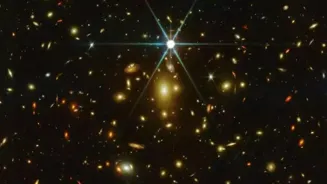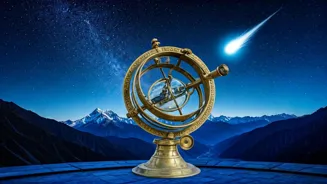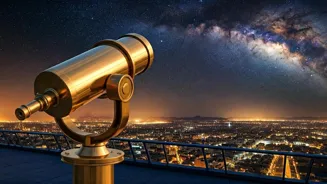Unveiling the Cosmic Mysteries: Space Telescopes Reshaping India's Stargazing Journey. Dive into the celestial revolution!
For generations, stargazing in India has been a pastime enjoyed across social divides.
From ancient scholars using rudimentary tools to modern-day enthusiasts with their shiny telescopes, the allure of the cosmos has always been strong.
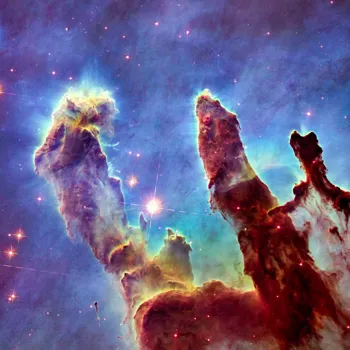
But even the best ground-based telescopes face a major hurdle: the Earth's atmosphere. Our atmosphere distorts light, blurring images of distant stars and galaxies. Space telescopes, however, are the champions of clear viewing when it comes to the universe.
These marvels of engineering float high above the atmosphere, offering us views of the cosmos that were previously unimaginable. Imagine a photograph of the Himalayas taken from a moving car versus one taken from a helicopter hovering perfectly still – that's the difference!
Hubble Space Telescope revolutionizes cosmic history with precise age calculation
The most famous of these cosmic eyes is, without a doubt, the Hubble Space Telescope. Launched in 1990, Hubble quickly became a household name.
Its breathtaking images, splashed across newspapers and television screens in India and around the world, ignited the imagination of a new generation of scientists and space enthusiasts. Before Hubble, the age of the universe was quite a mystery, with estimates varying wildly.
But Hubble's observations of Cepheid variable stars in distant galaxies allowed astronomers to precisely measure their distances, leading to a much more accurate calculation of the universe's age - around 13.8 billion years. This single discovery revolutionised our understanding of cosmic history.
Hubble reveals stellar birth, death, and element creation
Hubble also gave us our first detailed look at the birth and death of stars. Its images of star-forming regions, like the iconic Pillars of Creation, showed gas and dust collapsing under gravity to form new stars with unprecedented clarity.
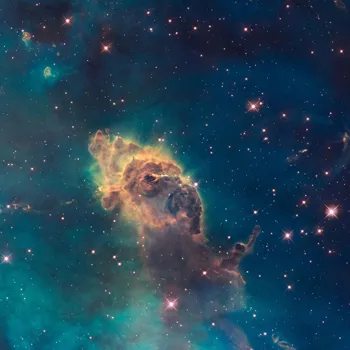
Similarly, Hubble captured the spectacular beauty of planetary nebulae, the colorful remnants of dying stars, revealing the complex ways in which stars shed their outer layers. These observations helped refine our understanding of stellar evolution and the chemical enrichment of the universe.
Every element heavier than hydrogen and helium (like the oxygen we breathe and the iron in our blood) was forged in the hearts of stars and then scattered across the cosmos when they died.
james webb space telescope reveals ancient universe evolution
But now, we have the James Webb Space Telescope, or JWST, which is an ambitious project. Deployed far beyond the moon, JWST is the most advanced space telescope ever created. It sees in the infrared which has several advantages.
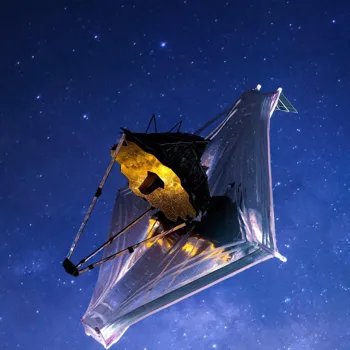
Infrared light can penetrate through clouds of dust and gas, allowing us to observe objects that would be completely hidden from Hubble's view.
This is especially important for studying the early universe because the light from the first stars and galaxies has been stretched by the expansion of the universe into the infrared part of the spectrum.
JWST is giving us our first glimpse of these ancient objects, helping us understand how the universe evolved from its infancy to the complex cosmos we see today.
JWST studies exoplanet atmospheres for life clues
With its powerful infrared vision, JWST is providing unprecedented insights into the atmospheres of exoplanets – planets orbiting stars other than our sun.
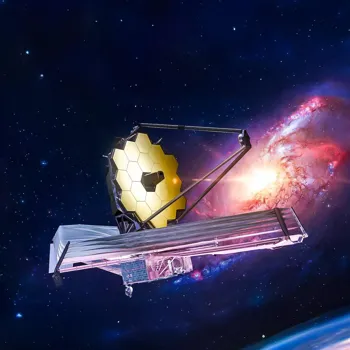
By analyzing the light that passes through the atmospheres of these planets, JWST can identify the presence of elements and molecules like water, methane, and carbon dioxide. These are essential ingredients for life as we know it.
While JWST can't directly detect life on other planets, it can help us identify potentially habitable worlds, where conditions might be suitable for life to emerge. This is a crucial step in our search for life beyond Earth.
The data that this telescope will provide to the future generation will be crucial.
Space telescopes inspire awe, drive innovation, and educate about cosmos
The impact of space telescopes extends far beyond the scientific community. The stunning images they produce inspire awe and wonder, reminding us of our place in the vast cosmos.
These images also play a crucial role in education, sparking interest in science and technology among young people in India and around the world.
As India continues to develop its own capabilities in space exploration, it's important to remember the power of these telescopes to drive innovation, inspire curiosity, and expand our understanding of the universe and our place within it.
Space telescopes are not just scientific instruments; they are windows to the universe, unlocking the secrets of cosmic history and paving the way for future discoveries.
AI Generated Content. Glance/InMobi shall have no liability for the content
